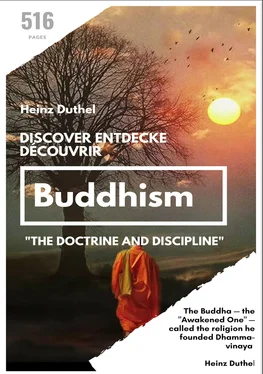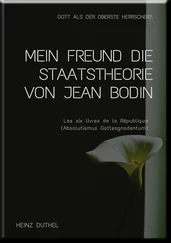Having left his teachers, the Bodhisatta adopted a different path, one that was popular in ancient India and still has followers today: the path of asceticism, of self-mortification, pursued in the conviction that liberation is to be won by afflicting the body with pain beyond its normal levels of endurance. For six years the Bodhisatta followed this method with unyielding determination. He fasted for days on end until his body looked like a skeleton cloaked in skin; he exposed himself to the heat of the midday sun and the cold of the night; he subjected his flesh to such torments that he came almost to the door of death. Yet he found that despite his persistence and sincerity these austerities were futile. Later he would say that he took the path of self-mortification further than all other ascetics, yet it led, not to higher wisdom and enlightenment, but only to physical weakness and the deterioration of his mental faculties.
Just then he thought of another path to enlightenment, one which balanced proper care of the body with sustained contemplation and deep investigation. He would later call this path "the middle way" because it avoids the extremes of sensual indulgence and self-mortification. He had experienced both extremes, the former as a prince and the latter as an ascetic, and he knew they were ultimately dead ends. To follow the middle way, however, he realized he would first have to regain his strength. Thus he gave up his practice of austerities and resumed taking nutritious food. At the time five other ascetics had been living in attendance on the Bodhisatta, hoping that when he attained enlightenment he would serve as their guide. But when they saw him partake of substantial meals, they became disgusted with him and left him, thinking the princely ascetic had given up his exertion and reverted to a life of luxury.
Now he was alone, and complete solitude allowed him to pursue his quest undisturbed. One day, when his physical strength had returned, he approached a lovely spot in Uruvela by the bank of the Nerañjara River. Here he prepared a seat of straw beneath an asvattha tree (later called the Bodhi Tree) and sat down cross-legged, making a firm resolution that he would never rise up from that seat until he had won his goal. As night descended he entered into deeper and deeper stages of meditation until his mind was perfectly calm and composed. Then, the records tell us, in the first watch of the night he directed his concentrated mind to the recollection of his previous lives. Gradually there unfolded before his inner vision his experiences in many past births, even during many cosmic aeons; in the middle watch of the night he developed the "divine eye" by which he could see beings passing away and taking rebirth in accordance with their karma, their deeds; and in the last watch of the night he penetrated the deepest truths of existence, the most basic laws of reality, and thereby removed from his mind the subtlest veils of ignorance. When dawn broke, the figure sitting beneath the tree was no longer a Bodhisatta, a seeker of enlightenment, but a Buddha, a Perfectly Enlightened One, one who had attained the Deathless in this very life itself.
For several weeks the newly awakened Buddha remained in the vicinity of the Bodhi Tree contemplating from different angles the Dhamma, the truth he had discovered. Then he came to a new crossroad in his spiritual career: Was he to teach, to try to share his realization with others, or should he instead remain quietly in the forest, enjoying the bliss of liberation alone?
At first his mind inclined to keeping quiet; for he thought the truth he had realized was just too deep for others to understand, too difficult to express in words, and he was concerned he would just weary himself trying to convey his realization to others. But now the texts introduce a dramatic element into the story. Just at the moment the Buddha decided to remain silent, a high deity named Brahma Sahampati, the Lord of a Thousand Worlds, realized that if the Master remained silent the world would be lost, deprived of the stainless path to deliverance from suffering. Therefore he descended to earth, bowed down low before the Enlightened One, and humbly pleaded with him to teach the Dhamma "for the sake of those with little dust in their eyes."
The Buddha then gazed out upon the world with his profound vision. He saw that people are like lotuses in a pond at different stages of growth, and he understood that just as some lotuses close to the surface of the water need only the sun's rays to rise above the surface and fully blossom, so there are some people who need only to hear the noble teaching to win enlightenment and gain perfect liberation of mind. When he saw this his heart was stirred by deep compassion, and he decided to go back into the world and to teach the Dhamma to those who were ready to listen.
The first ones he approached were his former companions, the five ascetics who had deserted him a few months earlier and were now dwelling in a deer park at Sarnath near Benares. He explained to them the truths he had discovered, and on hearing his discourse they gained insight into the Dhamma, becoming his first disciples. In the months ahead his following grew by leaps and bounds as both householders and ascetics heard the liberating message, gave up their former creeds, and declared themselves disciples of the Enlightened One.
Each year, even into his old age, he would wander among the villages, towns, and cities of the Ganges plain, teaching all who would lend an ear; he would rest only for the three months of the rainy season, and then resume his wanderings, which took him from present Delhi even as far east as Bengal. He established a Sangha, an order of monks and nuns, for which he laid down an intricate body of rules and regulations; this order still remains alive today, perhaps (along with the Jain order) the world's oldest continuous institution. He also attracted many lay followers who became devoted supporters of the Master and his Sangha.
After an active ministry of forty-five years, at the ripe age of eighty, the Buddha headed for the northern town of Kusinara. There, surrounded by many disciples, he passed away into the "Nibbana element with no remainder of conditioned existence," severing forever his bondage to the round of rebirths.
I said earlier that each of the major events in the Buddha's life gives us a specific object lesson in his teaching. Now I want to draw out the lessons suggested by these events.
First, the Bodhisatta's awakening to the harsh realities of human existence — his discovery of our bondage to old age, illness, and death — teaches us the importance of deep reflection and critical thinking. His awakening reflects back to us the somnambulance in which we usually live, mired in our pleasures and petty concerns, oblivious to the "great affair" staring us in the face at every moment of our lives. His awakening reminds us that we ourselves must emerge from the comfortable but dangerous cocoon of ignorance in which we have settled down; that we must break away from our thoughtless infatuation with our youth, health, and vitality; that we must rise to a new level of mature understanding which will enable us to triumph in our inevitable encounter with the Lord of Death.
The Bodhisatta's departure from the palace, his "great renunciation," teaches us a lesson in values. It shows us that from among the wide range of values which we can draw upon to give order to our lives, the quest for enlightenment and liberation should reign supreme. This goal ranks far above the pleasure, wealth, and power to which we ordinarily give priority, even above the call of social duty and mundane responsibilities. This does not mean, of course, that everyone who wants to follow the Buddha's path must be ready to leave behind home and family and adopt the lifestyle of a monk or nun. The Buddha's community of disciples included many householders as well as monks, devout laymen and laywomen who attained high levels of awakening while living active lives within the world. But the Buddha's example does show us that we must all order our values according to a scale which gives the highest place to the most worthy goal, to that which is also the most real of all realities, Nibbana; and we should never allow the claims of mundane obligations to pull us away from pursuing our aspiration.
Читать дальше












